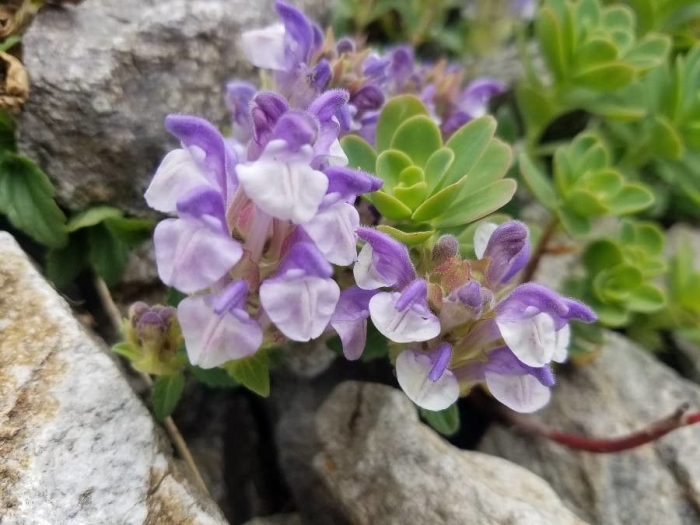Alpine Skullcap
(Scutellaria alpina)
Alpine Skullcap (Scutellaria alpina)
/
/

Matthieu Libeer
CC BY-SA 4.0
Image By:
Matthieu Libeer
Recorded By:
Copyright:
CC BY-SA 4.0
Copyright Notice:
Photo by: Matthieu Libeer | License Type: CC BY-SA 4.0 | License URL: https://creativecommons.org/licenses/by-sa/4.0/ | Attribution: Matthieu Libeer (cc-by-sa) | Rights Holder: Matthieu Libeer | Publisher: PlantNet | Date Created: 2020-07-17T14:17:50Z | Title: Scutellaria alpina L.: flower | Notes: |



















































Estimated Native Range
Summary
Scutellaria alpina, commonly known as Alpine Skullcap, is a small rhizomatous perennial herb in the mint family, Lamiaceae, native to the mountainous regions of Central and Southern Europe, including the Alps and the Carpathians. It thrives in alpine meadows, rocky slopes, and subalpine zones, where it forms low-growing clumps. Alpine Skullcap typically reaches a height of 10–30 centimeters (3.9–11.8 inches). It has an inflorescence that is a terminal tetragonal spike, and its flowers are showy, blue-violet or purple-white, measuring 2.5–3 cm long, blooming from June to August. The foliage is typically green, sometimes with a hint of purple, and the leaves are ovate to lanceolate with serrated margins.
Alpine Skullcap is valued for its attractive flowers and compact growth habit, making it suitable for rock gardens, alpine collections, and as a border plant in cottage gardens. It is relatively low maintenance, requiring medium amounts of water and thriving in well-drained soils. It prefers full sun to part shade and is tolerant of a range of soil types, provided they are well-draining. While not commonly afflicted by diseases, it can occasionally suffer from root rot if overwatered or planted in poorly draining soils. Alpine Skullcap is also appreciated for its medicinal properties, traditionally used in herbal medicine for its sedative and anti-inflammatory effects.CC BY-SA 4.0
Alpine Skullcap is valued for its attractive flowers and compact growth habit, making it suitable for rock gardens, alpine collections, and as a border plant in cottage gardens. It is relatively low maintenance, requiring medium amounts of water and thriving in well-drained soils. It prefers full sun to part shade and is tolerant of a range of soil types, provided they are well-draining. While not commonly afflicted by diseases, it can occasionally suffer from root rot if overwatered or planted in poorly draining soils. Alpine Skullcap is also appreciated for its medicinal properties, traditionally used in herbal medicine for its sedative and anti-inflammatory effects.CC BY-SA 4.0
Plant Description
- Plant Type: Herb
- Height: 0.3-0.5 feet
- Width: 0.5-1 feet
- Growth Rate: Moderate
- Flower Color: Purple, White
- Flowering Season: Summer
- Leaf Retention: Deciduous
Growth Requirements
- Sun: Full Sun, Part Shade
- Water: Medium
- Drainage: Fast
Common Uses
Bee Garden, Bird Garden, Butterfly Garden, Deer Resistant, Groundcover, Hummingbird Garden, Low Maintenance, Rabbit Resistant, Rock Garden, Showy Flowers
Natural Habitat
Native to alpine meadows, rocky slopes, and subalpine zones in Central and Southern Europe
Other Names
Common Names: Alpine Scullcap, Alpen-Helmkraut, Alpfrossört
Scientific Names: , Scutellaria alpina, Scutellaria alpina subsp. alpina, Scutellaria lupulina, Scutellaria alpina var. lupulina, Scutellaria jabalambrensis, Scutellaria albida, Scutellaria alpina subsp. jabalambrensis, Scutellaria alpina var. pumila, Scutellaria variegata
GBIF Accepted Name: Scutellaria alpina L.